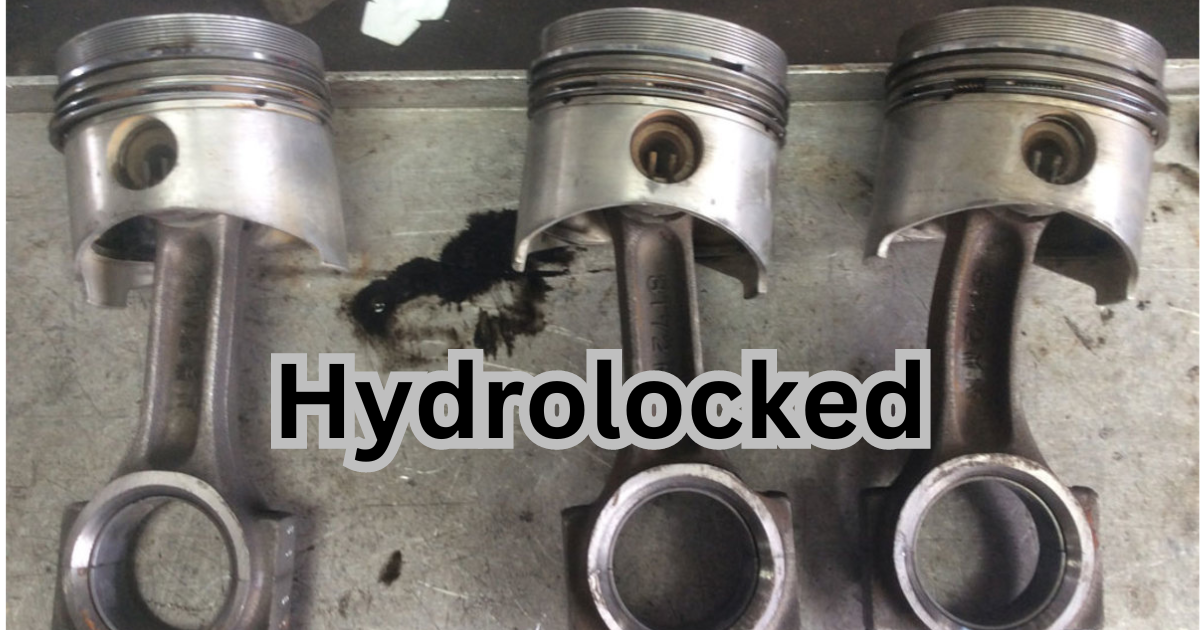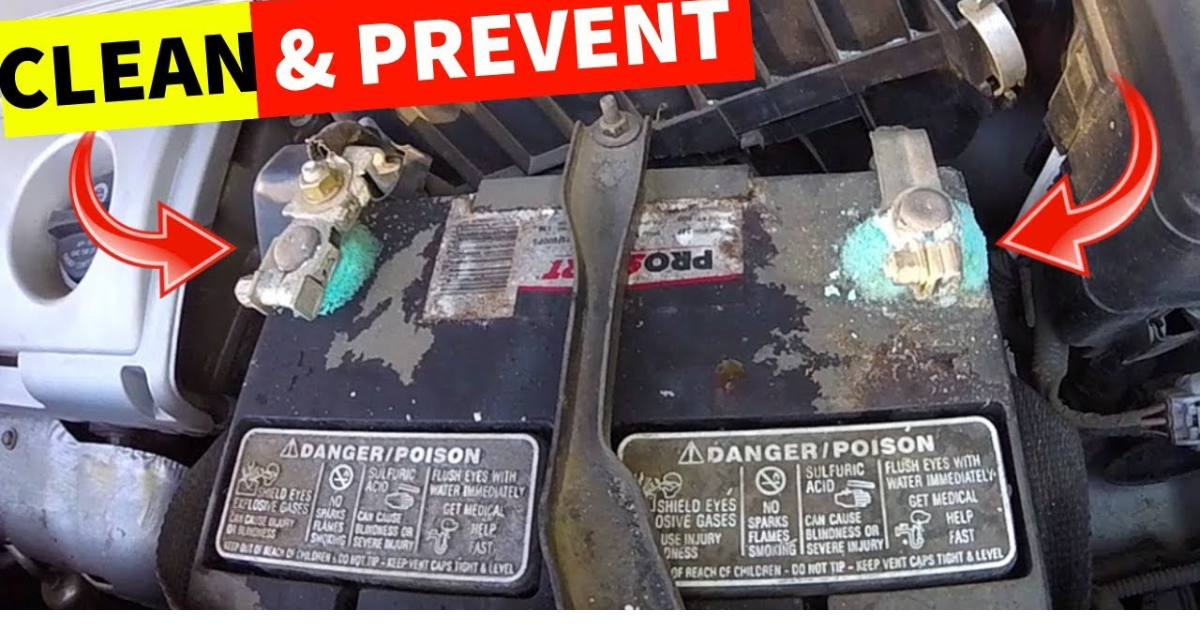The cylinders, which are a component of vehicle are the primary chambers for combustion. However, for combustion to take place, the cylinder just need fuel and air. A hydrolocked engine is the result of excessive entry of any other fluid.
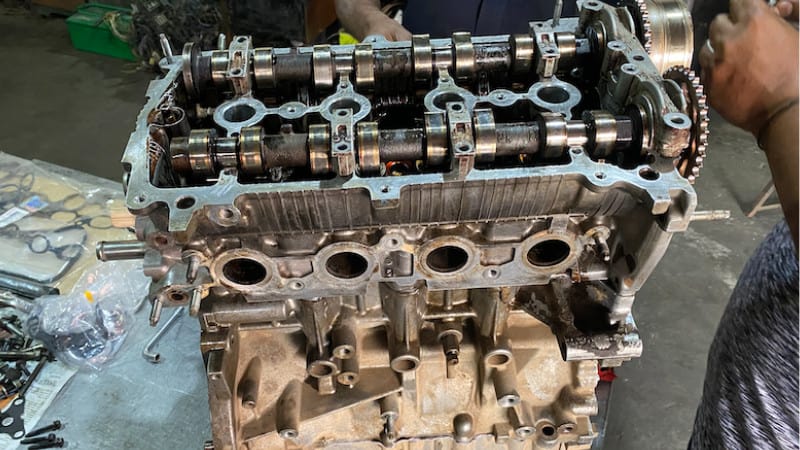
What is a hydrolocked engine, and how does it happen?
The term “hydrolocked engine” describes a malfunctioning engine that has been stuck because too much water has entered the cylinder. Although it is not recommended that water enter the cylinder, a tiny amount won’t cause any damage. Hydrolocking, on the other hand, happens when it gets excessive. To hydrolock an engine, how much water is needed? It usually takes more than the cylinder’s volume to cause trouble.
The piston is compressed when an excessive amount of water enters the cylinder due to the spinning of the crankshaft, which forces it higher. On the other hand, piston motion will be rendered impossible by the presence of water within the cylinder, as opposed to fuel or air, which the piston can compress. Invariably causing the engine to seize and rendering your car immovable.
Regrettably, hydrolocking can occur with more than just water. When coolant or oil enters the cylinder, it can also induce hydrolocking. Knowing how these liquids enter the engine is now more important than ever after learning what causes a hydrolocked engine.
When an automobile sinks to the bottom of a flood, the water might fill the cylinders and cause hydrolocking. One such thing that can cause hydrolock is driving frequently through a high or big body of water. The air intake on most cars is located close to the wheel, which means water can easily cover it, flow into the air filter, and eventually the intake manifold.
Another modification that can lead to hydrolocking is lowering the air intake so that outside air can enter the engine. Some drivers positioned their cone air filters directly beneath the bumper. Water will probably seep in if the water level is even slightly higher than the bumper. Another way water can get into the engine while washing it is through the air filters.
Injuries to the head gasket can also lead to hydrolocking. The head gasket prevents coolant and oil from leaking out and also seals the cylinder head to the engine block. Because only gasoline should ever be in the cylinders, any damage to it can lead to coolant leaking into the cylinders.
Damage to the injectors or intake valves is another, less common, but potential reason of hydrolocking. Engine flooding can occur if an injector is either leaking or stuck in the open position, allowing extra gasoline to enter the engine. Even though gasoline is the correct fluid, using too much of it could be problematic.
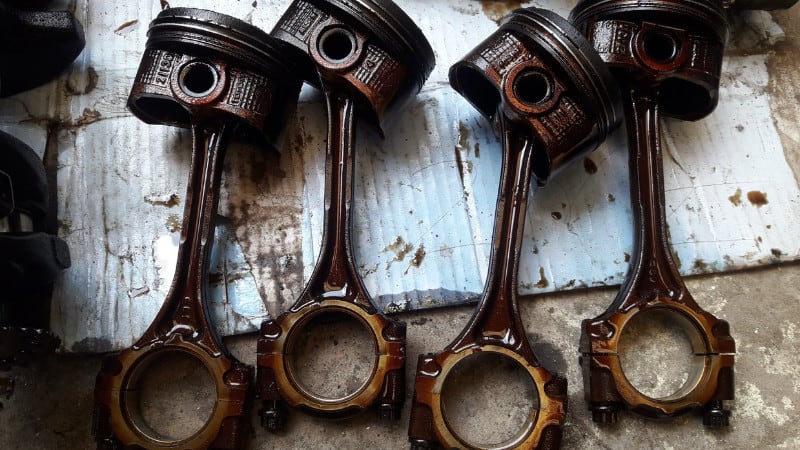
How to prevent occurring engine hydrolock?
First and foremost, staying away from things that could cause an engine hydrolock is the best course of action. On the other hand, this isn’t always within one’s control. When you can’t get your car to higher ground fast enough during a flood, that’s a perfect example.
In those circumstances, who would even consider it? While some will always occur, you can avoid water locking by following these steps.
- Avoid driving through deep water.
- Avoid cars with very low air intake.
- Don’t park your car under a heavy rain.
- Don’t wet the air filter.
- Regular maintenance is key.
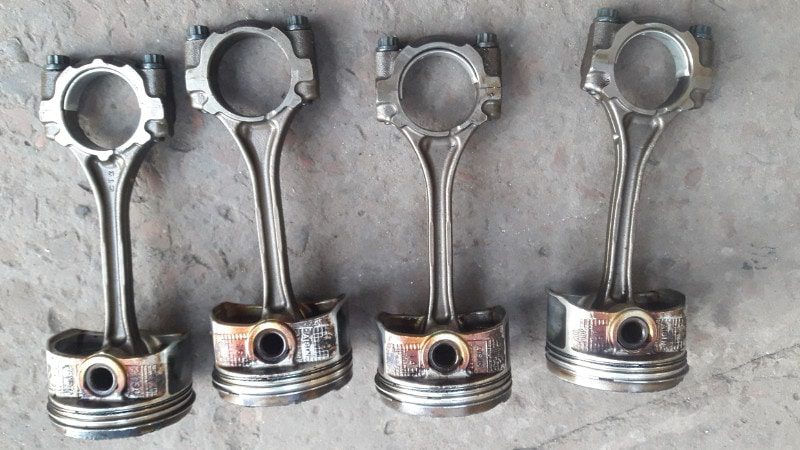
How to fix a hydrolocked engine?
It is possible to repair an engine that has hydrolocked. The extent of the damage, however, will dictate the amount of time, energy, and resources you devote to the task.
Repairing a hydrolocked engine can cost anywhere from $700 to $4,000, with the exact amount depending on the severity of the damage. With full coverage, which protects engines from floods, fires, vandalism, and theft, you won’t have to worry about paying such a hefty sum. But before you file an insurance claim for a hydrolocked engine, there’s information you need to know.
If the damage is the result of an unforeseen event, such a flood, most insurance companies will pay for the repairs. But if it was your fault—for example, because you left your car out in the rain or drove across a deep puddle—you’ll have to pay for it yourself.
Conclusion
The term “hydrolocked engine” describes a motor that becomes stuck when too much water gets into the combustion chamber. In the worst scenario scenario, this renders your vehicle totally immobile and produces a slew of other difficulties.
Repairing a severely hydrolocked system will need a significant investment of both time and money. Because some causes are entirely preventable, it is crucial to find ways to stop it before it starts.
